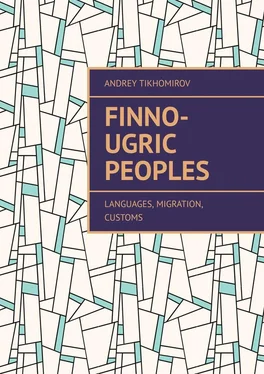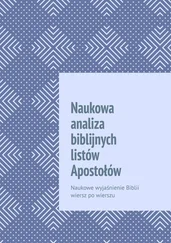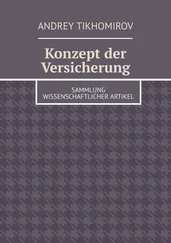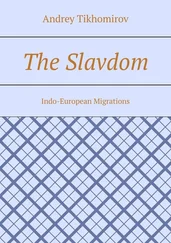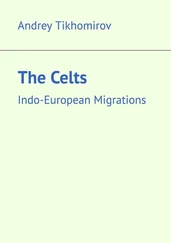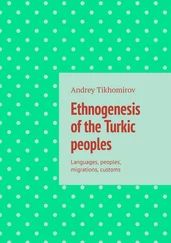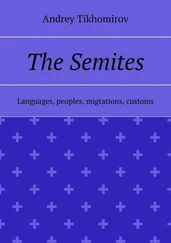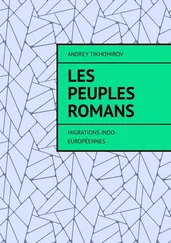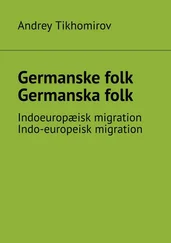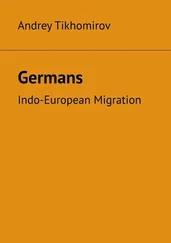Andrey Tikhomirov - Finno-Ugric peoples. Languages, Migration, Customs
Здесь есть возможность читать онлайн «Andrey Tikhomirov - Finno-Ugric peoples. Languages, Migration, Customs» — ознакомительный отрывок электронной книги совершенно бесплатно, а после прочтения отрывка купить полную версию. В некоторых случаях можно слушать аудио, скачать через торрент в формате fb2 и присутствует краткое содержание. ISBN: , Жанр: История, Языкознание, на английском языке. Описание произведения, (предисловие) а так же отзывы посетителей доступны на портале библиотеки ЛибКат.
- Название:Finno-Ugric peoples. Languages, Migration, Customs
- Автор:
- Жанр:
- Год:неизвестен
- ISBN:9785449828439
- Рейтинг книги:5 / 5. Голосов: 1
-
Избранное:Добавить в избранное
- Отзывы:
-
Ваша оценка:
- 100
- 1
- 2
- 3
- 4
- 5
Finno-Ugric peoples. Languages, Migration, Customs: краткое содержание, описание и аннотация
Предлагаем к чтению аннотацию, описание, краткое содержание или предисловие (зависит от того, что написал сам автор книги «Finno-Ugric peoples. Languages, Migration, Customs»). Если вы не нашли необходимую информацию о книге — напишите в комментариях, мы постараемся отыскать её.
Finno-Ugric peoples. Languages, Migration, Customs — читать онлайн ознакомительный отрывок
Ниже представлен текст книги, разбитый по страницам. Система сохранения места последней прочитанной страницы, позволяет с удобством читать онлайн бесплатно книгу «Finno-Ugric peoples. Languages, Migration, Customs», без необходимости каждый раз заново искать на чём Вы остановились. Поставьте закладку, и сможете в любой момент перейти на страницу, на которой закончили чтение.
Интервал:
Закладка:
The most valuable material brought from the Urals by Reguli was processed throughout the whole subsequent life. He prepared the main work, “The Vogul Country and its Inhabitants,” published in 1864 in Hungarian in Budapest after the author’s death. Reguli attached great importance to the study of the name of the area, in modern toponymy, which allows us to judge the resettlement of peoples in the past. He also built his ideas about the origin and history of such resettlement on the basis of a comparative analysis of languages, taking into account ethnographic data. Reguli has established a genetic link between the Finno-Ugric languages, which include the languages of Hungarians, Finns, Mansi, Khanty, Komi and Mari. He was particularly struck by the similarities between the Mansi and Hungarian languages. He came to the conclusion that the Hungarians came from ancestors who long ago lived in the Northern Urals and in the Trans-Urals, in the territory now inhabited by Mansi. These statements of Reguli are basically accepted by modern linguists. According to their ideas, the ancestral home of the Ugrians was located on a wooded area in the Kama basin and somewhat south. In the first half of the first millennium BC, tribes emerged from the Ugrian community, who later became the ancestors of the Hungarians. The remaining Ugrians remained on this territory for a long time, and in the 12th-15th centuries a part of the tribes moved beyond the Urals. In general, Reguli’s journey through the Urals and the Urals lasted about a year and a half (arrival in Solikamsk – November 1843, departure from Berezovo – March 1845). The length of its path amounted to 5.5 thousand km. Previously, not a single scientist has conducted such lengthy and thorough research here, did not proceed on such a vast territory. Reguli’s journey through little-known territory aroused interest in studying the nature and population of the Northern Urals and contributed to the development of the study of Finno-Ugric peoples.
Finno-Ugric migrations
The peoples speaking Finnish-Ugric languages, during their linguistic community, lived in the east and northeast of Europe, on the border of Europe and Asia, in the Ural Mountains. The Ural Mountains are the border between Europe and Asia, focusing on the Urals, we become Eurasians, since there is no division into “East” and “West”. It was here that the most ancient communities were formed, which later received the names of the Indo-Europeans, as well as other language families, in particular, the Finno-Ugric peoples. The chronological stages of the formation of the Indo-European community: 1. About 70 thousand years ago, some immigrants from Africa lived in the North Pole region, but as the glaciers approached (the Valdai glaciation corresponds to the Wurm, Vislins and Wisconsins), people began to retreat south; 2. From 70 to 11 thousand years ago, a period characterized by a general cooling, the continuation of the retreat of people from north to south of Eurasia; 3. From 11 to 10 thousand years ago, the Holocene period, the formation of the Indo-European community in the region of the South Urals. The “Great Steppe”, stretching between the South Urals, the Caspian Sea and the Aral Sea, becomes a place of migration of many peoples. The famous Indian public figure Tilak argued that the homeland of the Indians is the Arctic, as the ancient Vedas describe a territory where half a day and half a night.
In the area of the great Urals (Ural Mountains) at the end of the 4th millennium BC the oldest Ural community is formed, which includes the Finno-Ugric peoples (formed in a separate community at the end of the 3rd millennium BC) and Samoyedians (formed in a separate community at the end of the 1st millennium BC). At the end of 3 millennium BC.
.Finno-Ugrians migrate to the region of the Southern Urals after the departure of the ancient Indo-Europeans due to the depletion of bog iron ores (they were developed in the so-called Vary, archaeologists called these found settlements “the country of cities”). Based on the Ugric basic language at the end of the 3rd millennium BC – mid 1 millennium BC in the region of the South Urals, the right-Hungarian (Hungarians) and the Praobsko-Ugric (Khanty, Mansi) community of nations are being formed; at the end of 3 millennium BC e. – mid 2 millennium BC. On the basis of the Finno-Permian basic language, the Permian (Komi, Udmurts) and Finno-Volga (Mari, Mordovians, Saami, Finns, Izhora, Vodi or Vod, Veps, Estonians, Livas) community of peoples are formed.
The ancestral home of the Uralic (Finno-Ugric and Samoyedic) Turkic, Mongolian, and Tungus-Manchu languages was located on the northeastern periphery of Europe, which proves the reality of the existence of the most ancient Nostratic macro-family of languages. As archaeological cultures that could be correlated with the region of the pan-Indo-European cultural complex, scientists call the Khalaf, Ubeyd, Chatal-huyuk cultures in South-West Asia and Kuro-Araksin in Transcaucasia. The secondary intermediate ancestral home of the Indo-Europeans, according to these scientists, was the Northern Black Sea Region, where their resettlement dates back to the III millennium BC. South of the range of the Indo-European family, the core of the Semitic-Hamitic (Afrasian) language family may have formed. The carriers of the Kartvelian proto-language apparently lived to the north of the Indo-Europeans, and to the east of the Dravidian proto-language. This nostratic macro-family of languages includes Indo-European, Semitic, Hamitic, or Afrasian, Kartvelian, Uralic, Dravidian, Turkic, Mongolian, Tunguso-Manchu, Chukchi-Kamchatka and, possibly, Eskimo-Aleutian language families. The languages of this huge macro-family are now spoken by over 2/3 of the world’s population. Scientific studies have shown the validity of combining Indo-European, Semitic, Hamitic, Uralic, Altai and some languages into a large nostratic macro-family of languages. This macrofamily has developed in the Upper Paleolithic on the territory of South-West Asia and the regions adjacent to it. During the retreat of the last Wurm glaciation and climatic warming in the Mesolithic, the Nostratic tribes settled throughout the vast territory of Asia and Europe; they pushed aside and partially assimilated the tribes that had lived there before. In this historical process, the Nostratic tribes formed a number of isolated areas where the formation of special language families began. The largest of them, the Indo-European language community, began to form on the territory of the Southern Urals, and then in the “Great Steppe” – from Altai to the Black Sea.
Читать дальшеИнтервал:
Закладка:
Похожие книги на «Finno-Ugric peoples. Languages, Migration, Customs»
Представляем Вашему вниманию похожие книги на «Finno-Ugric peoples. Languages, Migration, Customs» списком для выбора. Мы отобрали схожую по названию и смыслу литературу в надежде предоставить читателям больше вариантов отыскать новые, интересные, ещё непрочитанные произведения.
Обсуждение, отзывы о книге «Finno-Ugric peoples. Languages, Migration, Customs» и просто собственные мнения читателей. Оставьте ваши комментарии, напишите, что Вы думаете о произведении, его смысле или главных героях. Укажите что конкретно понравилось, а что нет, и почему Вы так считаете.
